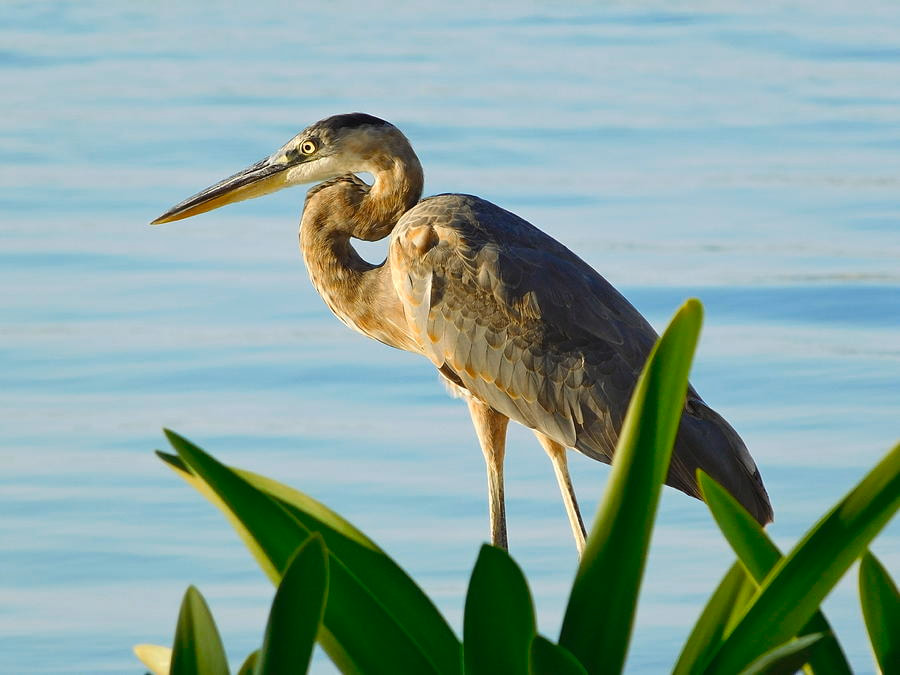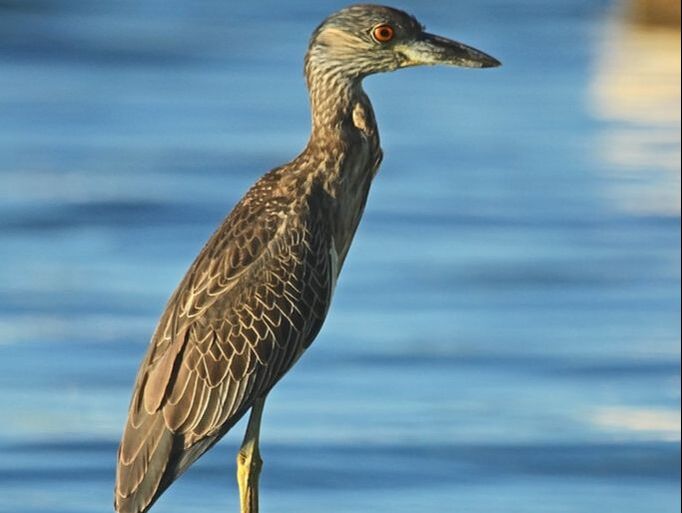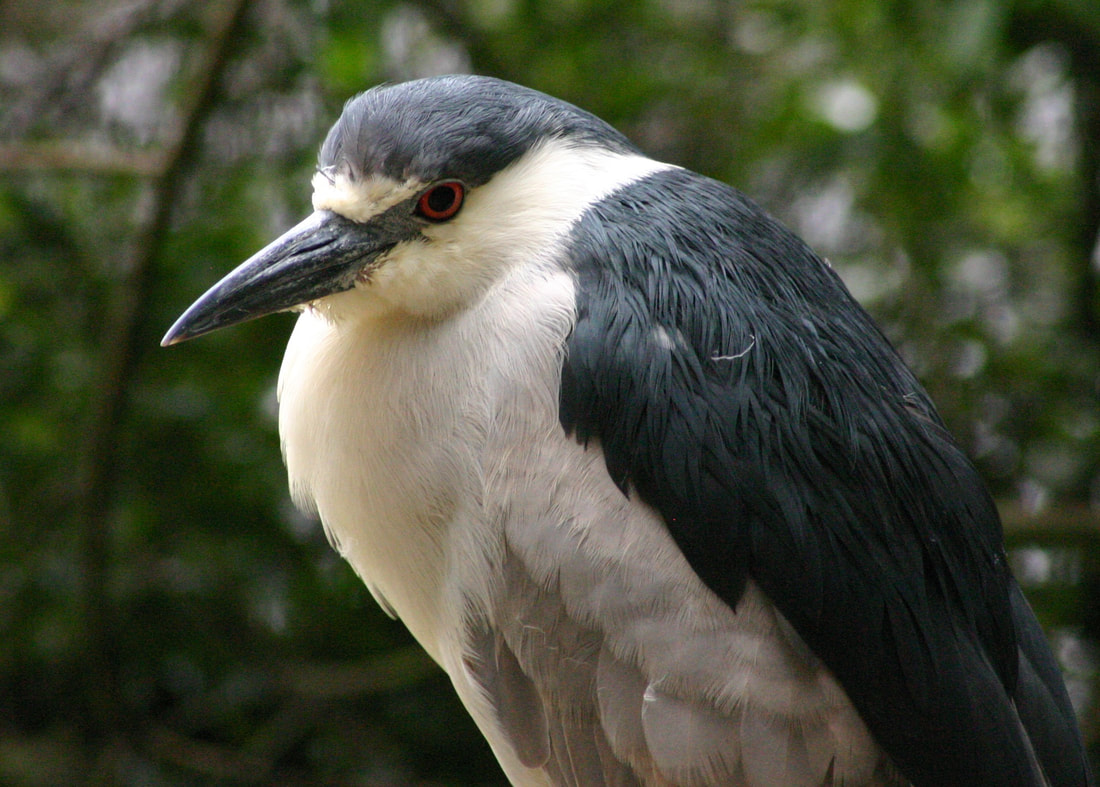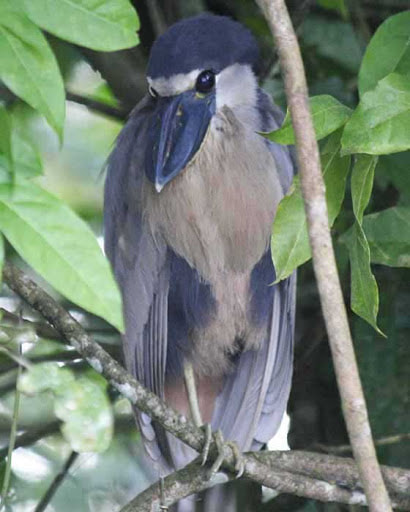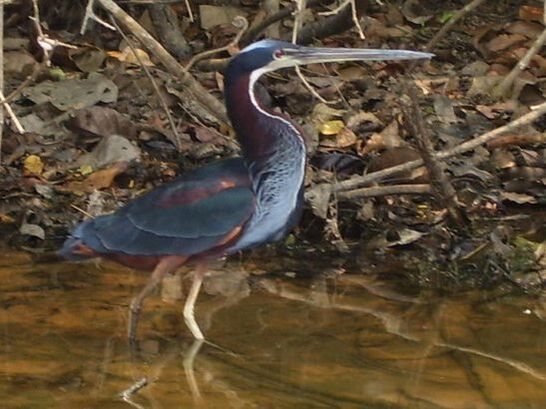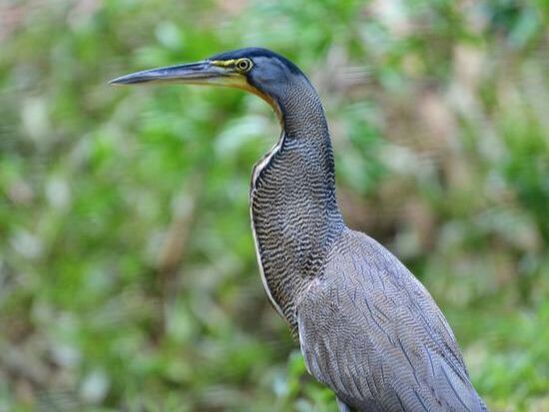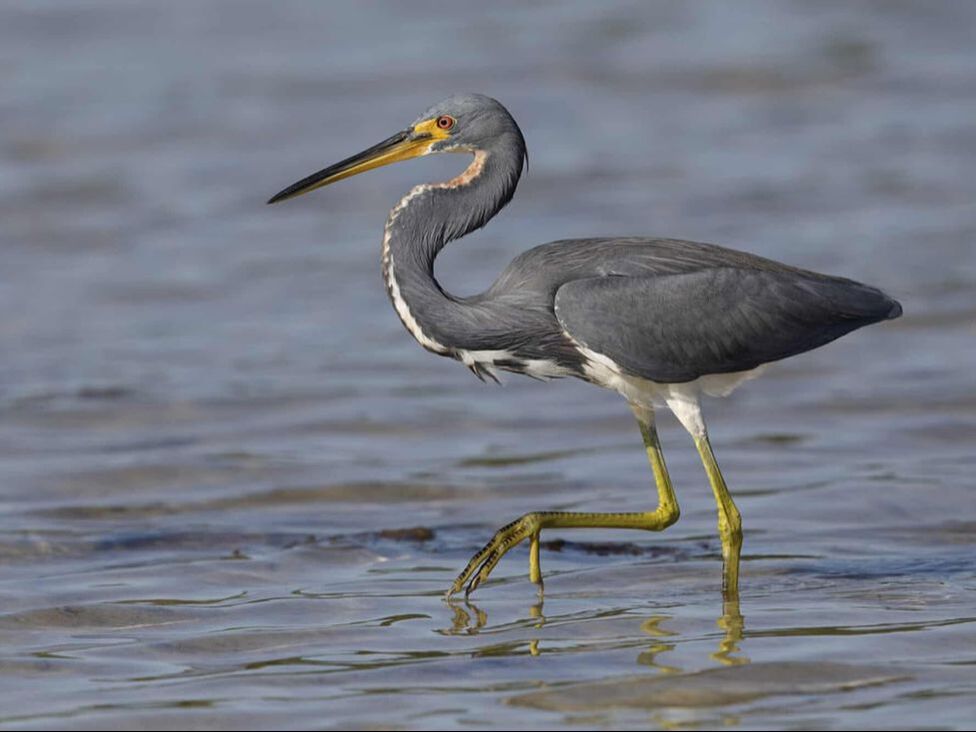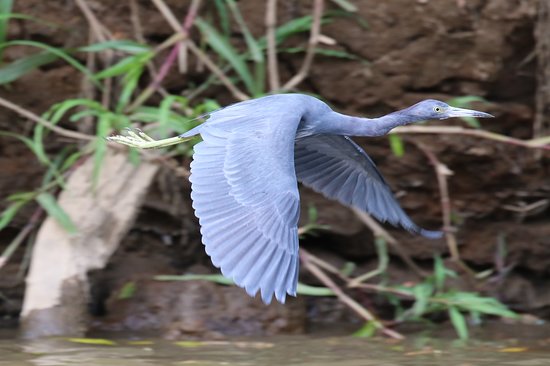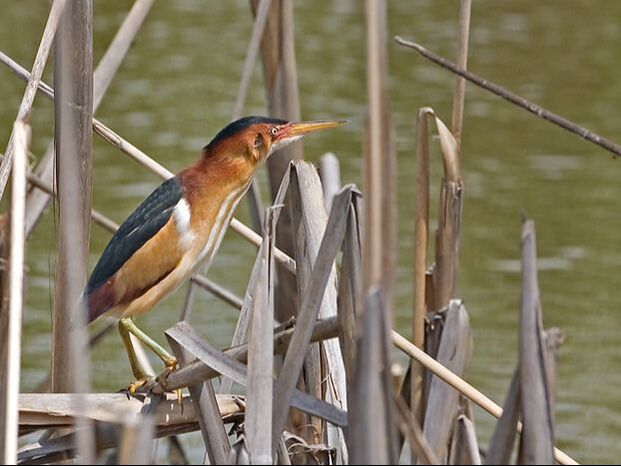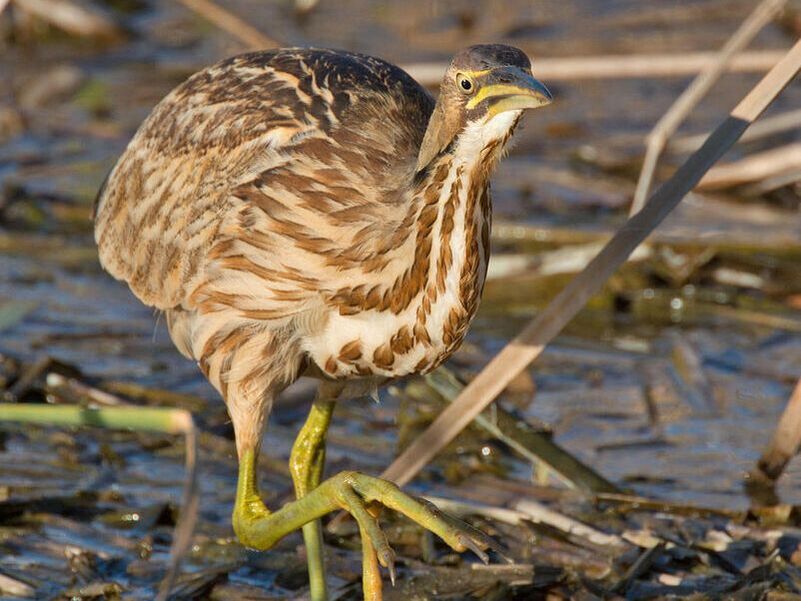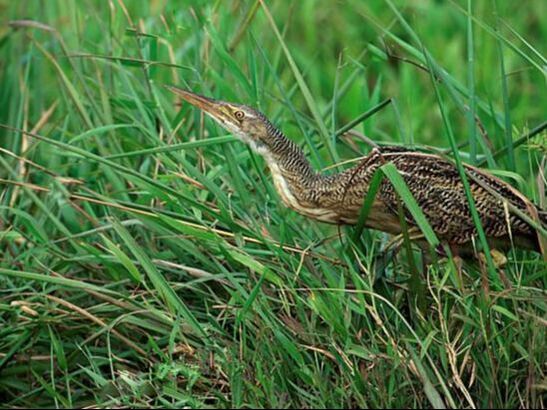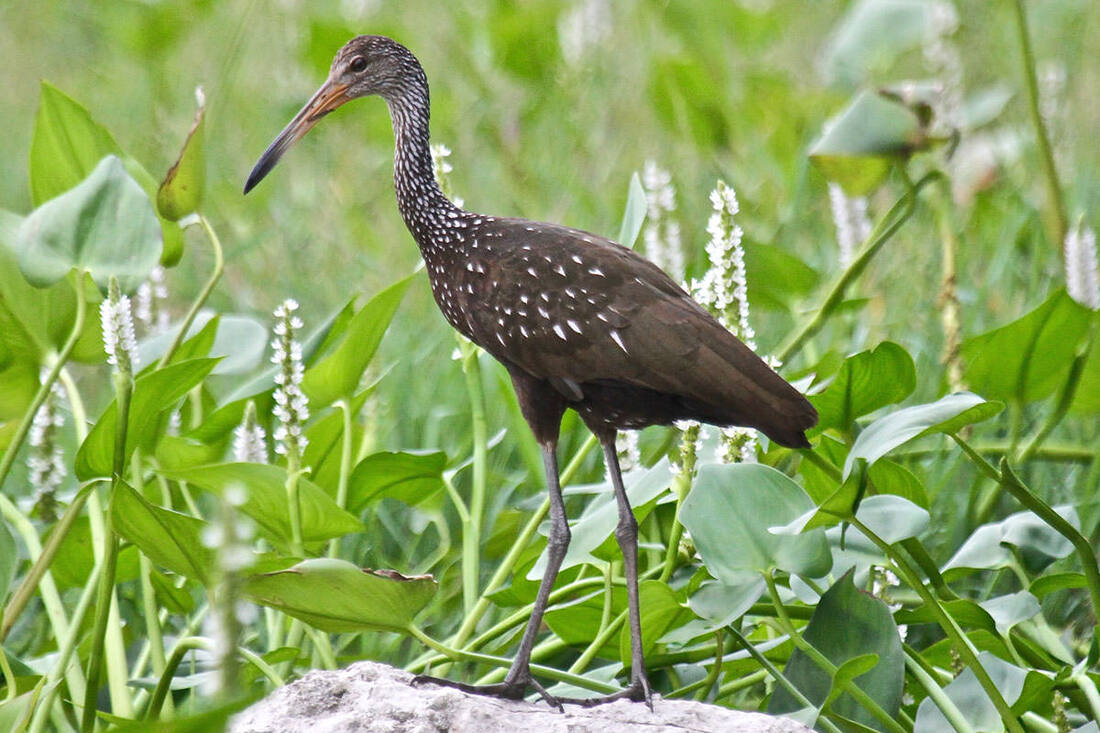Herons & Bitterns - in Belize
Herons
Great Blue Heron
Great Blue Heron - Whether poised at a river bend or cruising the coastline with slow, deep wingbeats, the Great Blue Heron is a majestic sight. This stately heron with its subtle blue-gray plumage often stands motionless as it scans for prey or wades belly deep with long, deliberate steps. They may move slowly, but Great Blue Herons can strike like lightning to grab a fish or snap up a gopher. In flight, look for this widespread heron’s tucked-in neck and long legs trailing out behind.
BELIZE HABITAT - Most wet areas that are not densly forested; especially common at shrimp farms and shwllow lagoons. White morph confined to mangroves, beaches, littoral forest in coastal areas and cayes. Nests singly or, more typically, in small colonies in mangroves and littoral forest on small cayes. Where can I find this bird in Belize? Fairly common winter visitor in lowlands throughout, including cayes, primarily August to May; fewer in summer. Small nesting colonies on Cayo Rosario (off Ambergris Caye) and in Shipstern Lagoon Corozal. Uncommon white morph found on north cayes and occasionally, along mainland coast south to Dangriga. INTERESTING BIRD FACTS
|
Green Heron
Green Heron - From a distance, the Green Heron is a dark, stocky bird hunched on slender yellow legs at the water’s edge, often hidden behind a tangle of leaves. Seen up close, it is a striking bird with a velvet-green back, rich chestnut body, and a dark cap often raised into a short crest. These small herons crouch patiently to surprise fish with a snatch of their daggerlike bill. They sometimes lure in fish using small items such as twigs or insects as bait.
BELIZE HABITAT - Forest lined lagoons, ponds, rivers and streams; freshwater and brackish lagoons; mangroves; littoral forests; occasionally mudflats. Much more likely to be seen in open than Least Bittern. Nests in littoral forest and mangroves. Where can I find this bird in Belize? Common winter visitor; less common in summer. Nests on cayes and locally on mainland. INTERESTING BIRD FACTS
|
Night Herons
Yellow-Crowned Night Heron
Yellow Crowned Night Heron - While not as slender as a typical heron, the Yellow-crowned Night-Heron’s smooth purple-gray colors, sharp black-and-white face, and long yellow plumes lend it a touch of elegance. They forage at all hours of the day and night, stalking crustaceans in shallow wetlands and wet fields. Their diet leans heavily on crabs and crayfish, which they catch with a lunge and shake apart, or swallow whole. They’re most common in coastal marshes, barrier islands, and mangroves, but their range extends inland as far as the Midwest.
BELIZE HABITAT - Towns, lawns, shores of rivers, estuaries, ponds, swamps, marshes, mudflats, mangroves; often seen foraging beneath streetlights. Roosts communally in large trees and mangrove forests; nests in mangroves and littoral forest. Where can I find this bird in Belize? Fairly common to common resident in lowlands nearly throughout, including cayes, but confirmed nesting sites relatively few. Generally more common in coastal areas than inland. INTERESTING BIRD FACTS
|
Black Crowned Night Heron
Black Crowned Night Heron - Black-crowned Night-Herons are stocky birds compared to many of their long-limbed heron relatives. They’re most active at night or at dusk, when you may see their ghostly forms flapping out from daytime roosts to forage in wetlands. In the light of day adults are striking in gray-and-black plumage and long white head plumes. These social birds breed in colonies of stick nests usually built over water. They live in fresh, salt, and brackish wetlands and are the most widespread heron in the world.
BELIZE HABITAT - Marshes, lagoons, estuaries, mangroves; roosts communally in trees. Where can I find this bird in Belize? Uncommon to locally common winter visitor on mainland, mid-September to late May; also recorded on Ambergris Caye and Caye Caulker. Small numbers remain through summer at Crooked Tree, where it may nest. INTERESTING BIRD FACTS
|
Boat-Billed Heron
Boat Billed Heron - The boat-billed heron grows to about 21 inches long. Adults are pale grey to white in color, with chestnut-colored abdomens and black flanks. The massive, broad, scoop-like bill, which gives rise to this species' name, is mainly black. This bird is also adorned with a crest which is thought to be used in mate attraction as it is larger in males. The sexes are similar in appearance, the main differences being that females are slightly smaller, grayer in appearance, and have shorter crests than males. Newly hatched nestlings have green-yellow skin, with their upperparts covered in gray down feathers. Their upper bill is black and they have green-yellow legs. Juveniles are darker in color than adults and lack a crest.
BELIZE HABITAT - Forages along shores of estuaries, ponds, and rivers at night; roots inconspicuously in trees along banks of rivers, lakes, and swamps during the day. Nests in colonies in mangroves and other dense streamside trees. Where can I find this bird in Belize? Uncommon to fairly common resident primarily in coastal lowlands, including Ambergris Caye and Turneffe Islands, and once on Caye Caulker. |
Agami Heron
Agami Heron - Reclusive, rarely seen heron of humid tropical lowlands. Found along quiet forest streams and locally in mangroves. Walks slowly and stealthily hunting from the water’s edge or a low overhanging branch. Note the very long and slender, dagger-tipped bill. Adult plumage is dark overall, with a beautiful silvery spray of lacy neck plumes. Immature is browner overall, without the neck plumes.
BELIZE HABITAT - Dense foliage along edges of swamps, rivers, lagoons; best seen on exposed shorelines in dry season. Nests in mangroves. Where can I find this bird in Belize? Uncommon and local on mainland in dry season, apparently throughout, but fairly common at Crooked Tree Belize. Nesting colony near mouth of Moho River, possibly also Money River in Toledo district. |
Bare-Throated Tiger Heron
Bare Throated Tiger Heron - A large but rather short-legged, primal-looking heron of mangroves and freshwater marshes in tropical lowlands. Often in areas with trees, but also around ponds in rather open marshes. All plumages have naked yellow throat skin (not always easy to see), greenish legs. Adult has gray cheeks, finely barred plumage, and rusty thighs; immature is boldy barred blackish and warm brown (hence the name ‘tiger-heron’).
BELIZE HABITAT - Marshes, lagoons, streamsides, swamp forest, occasional mangroves. Frequently perches in open, either on the ground or in a tree. Where can I find this bird in Belize? Locally fairly common resident at low elevations on mainland and Ambergris Caye. |
Tri-Colored Heron
Tri-Colored Heron - Medium-sized heron with slaty-blue back and white belly. Bill is longer than other herons. Adults show yellowish plumes on lower back, purplish neck, and paler throat. Immatures show bright rufous neck and shoulders. Often active as its forages; moving swiftly in the shallows chasing after fish.
BELIZE HABITAT - Mudflats, estuaries, lagoons, coastal shorelines, marshes. Nests in mangroves in small colonies, often mixed with other herons. Where can I find this bird in Belize? Fairly common to common winter visitor in coastal areas and on cayes; less common inland and in summer. Nests in Shipstern Lagoon in Corozal, and on cayes west of Ambergris Caye. |
Little Blue Heron
Little Blue Heron - Medium-sized dark heron. Long bill is pale blue at the base and darker at the tip. Adults are grayish-blue overall; purplish head and neck contrast with body. Immatures are white in their first year, often showing splotches of gray-blue by their first spring. Greenish-yellow legs. Forages in wetlands. Moves slowly through the shallows with neck outstretched. More elongated body than Snowy Egret.
BELIZE HABITAT - Unforested and sparsely forested areas with standing water. Congregates at shallow water lagoons, shrimp farms, rice fields; less common along forest lined streams and rivers. Where can I find this bird in Belize? Common winter visitor, primarily August to May, with a few immatures remaining through summer. Does not nest in Belize. |
|
Bitterns
Least Bittern
Least Bittern - The furtive Least Bittern is often little more than a voice in the reeds that is frustratingly difficult to locate. But these diminutive herons reward patience and will charm birders persistent enough to discover them in their wetland haunts. They’re smartly clad in chestnut, buff, and black, with the male more richly colored than the female. Although drainage and development of wetlands has reduced their populations, Least Bitterns persist over much of their historical range, and are most readily seen during the breeding season.
BELIZE HABITAT - Tall grass marshes, where it stays well hidden. Where can I find this bird in Belize? Resident locally south at least to south Orange Walk and central Belize, possibly Ambergris Caye. More widespread in winter, occurring annually as far south as the rice fields near Big Falls, Toledo. Recorded once on Half Moon Caye, on Apri 17, 1958. INTERESTING BIRD FACTS
|
American Bittern
American Bittern - You'll need sharp eyes to catch sight of an American Bittern. This streaky, brown and buff heron can materialize among the reeds, and disappear as quickly, especially when striking a concealment pose with neck stretched and bill pointed skyward. These stealthy carnivores stand motionless amid tall marsh vegetation, or patiently stalk fish, frogs, and insects. They are at their most noticeable in spring, when the marshes resound with their odd booming calls that sounds like the gulps of a thirsty giant.
BELIZE HABITAT - Tall grass marshes, rice fields. Where can I find this bird in Belize? Occasional winter visitor October to April; recorded from Orange Walk, Belize to Toledo, and Ambergris Caye. INTERESTING BIRD FACTS
|
Pinnated Bittern
Pinnated Bittern - The pinnated bittern is a large heron, measuring between 25–30 inches with a weight that ranges from 1.2 to 2.6 pounds; males typically weigh considerably more than females. Sexes are similarly plumaged, but females tend to be smaller than males and have brown instead of black on the tail.Both adults and immature birds are generally buffy, though heavily marked with cryptic patterning. Juveniles tend to have a somewhat more reddish ground color. The throat is unmarked white, the foreneck is white broadly streaked with pale brown, and the rest of the neck is buff with thin black barring. The breast and belly are white with broad pale brown streaks, while the back is buff, heavily streaked and barred with black. Rectrices are black in males and brown in females; the slate-grey remiges create a conspicuous two-toned effect in flight.
The bill is stout and strong, yellowish overall with a dusky upper mandible. The bare facial skin is bright yellow, with a brown line running across the lores. The legs are greenish-yellow, and the iris is yellow. BELIZE HABITAT - Tall grass and reeds in wet areas. Where can I find this bird in Belize? Uncommon and rarely seen local residents south at least to central Belize, possibly to Toledo (presence confirmed; breeding not established). Unrecorded in Belize prior to 1970, but probably overlooked. |
|
Limpkin
|
Limpkin - The gangly, brown-and-white Limpkin looks a bit like a giant rail or perhaps a young night-heron. Its long bill is bent and twisted at the tip, an adaptation for removing snails from the shell. Limpkins are tropical wetland birds whose range reaches into Florida. They specialize in eating apple snails, which they hunt both day and night, and they often leave telltale piles of snail shells at the edges of freshwater wetlands where hunting is good. This bird’s haunting cries, heard mostly at night, are otherworldly and unforgettable.
BELIZE HABITAT - Freshwater marshes, lagoosn, wet savannas; less common in wet meadows, roadside ditches.
Where can I find this bird in Belize? Fairly common to locally common resident on mainland nearly throughout but most plentiful in coastal lagoons; also recorded on north Ambergris Caye, where perhaps resident. INTERESTING BIRD FACTS
|

